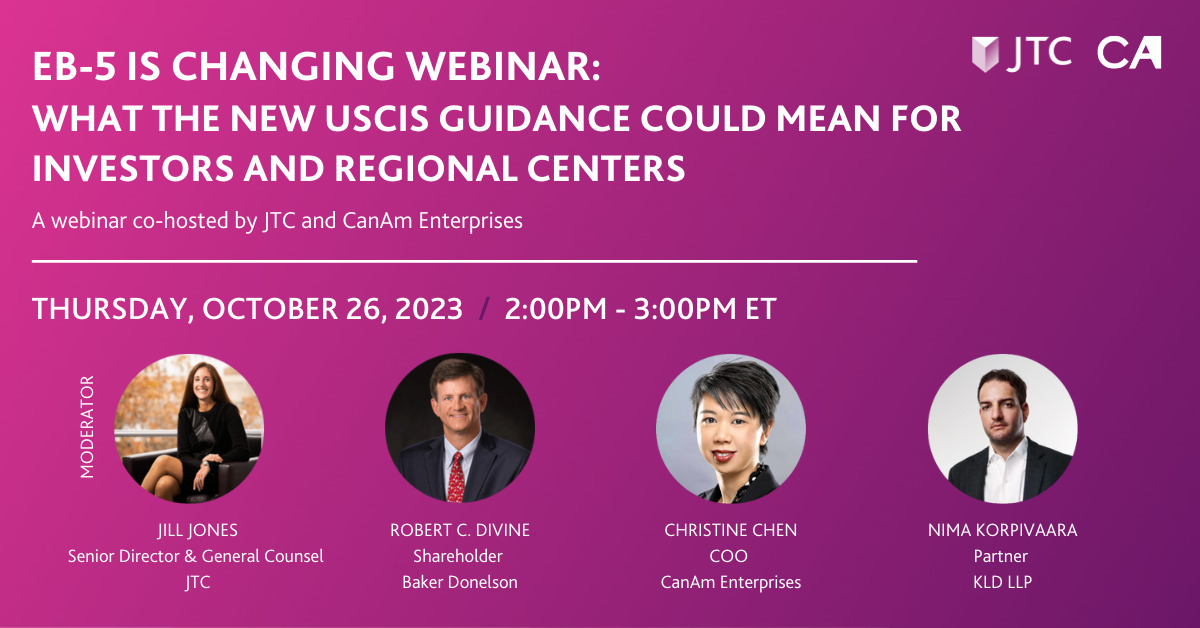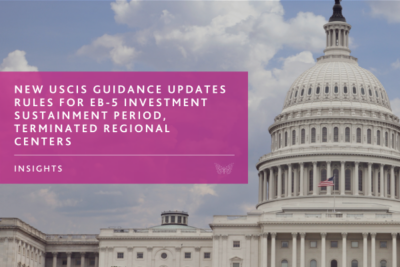Last week, Dr. Michael Hanley, Data Scientist at the U.S. Department of State presented crucial EB-5 data points and policy updates at the @IIUSA’s Leadership Summit in DC. Below are our key takeaways:
Takeaway #1: EB-5 Visa Issuance is Picking-Up at Consular Offices:
In FY2023, 8,350 EB-5 visas were issued through consular processing and 1,491 were issued through adjustment of status, making it the highest level since FY2018. This is due to a significant increase in visa processing capacity at Consular Offices in Guangzhou, Mumbai, Ho Chi Minh City, and around the world. This recovery is critical for maximizing the usage of additional EB-5 visa numbers available to the unreserved category in FY2024.
Takeaway #2: Look Out for Priority Dates for Retrogressed Countries to Advance:
The 6,396 unused carryover EB-5 visas allocated from FY2022 will be added back to the unreserved category in FY2024. Combined with the 7,724 EB-5 visas allocated to the unreserved category in the new federal fiscal year, this means that a total of 14,120 EB-5 visas are anticipated to be available to the unreserved category in FY2024, marking an all-time high in terms of visa availability. With overseas Consular Offices operating at significantly improved capacity since the pandemic, DOS anticipates a significant reduction in the backlog for pre-RIA EB-5 applicants from China and India during this fiscal year.
Takeaway #3: Reserved EB-5 Visa Categories Will Not Retrogress in FY2024:
According to the U.S. Department of State, none of the reserved EB-5 visa numbers were used in FY2023 despite recent I-526E petition approvals in recent months. DOS anticipates issuing EB-5 visas for the reserved categories possibly in late FY2024 but it is unlikely that a cut-off date will be set for the reserved categories in FY2024.
Takeaway #4: Carryover Visas Will Be Used Before “Regular” EB-5 Visas:
The State Department will prioritize the use of carryover visa numbers before tapping into the regular EB-5 numbers newly available each year from the annual limit. This way, DOS can allow the highest number of reserved visas to be carried over to the next fiscal year, thereby “maximizing visa availability.”
For more information, please contact us.
CanAm Enterprises, with over three decades of experience promoting immigration-linked investments in the US and Canada, has a demonstrated track record of success. With over 60 financed projects and $3 billion in raised EB-5 investments, CanAm has earned a reputation for credibility and trust. To date, CanAm has repaid more than $2.26 billion in EB-5 capital from over 4,530 families. CanAm manages several USCIS-designated regional centers that stretch across multiple states. For more information, please visit www.canamenterprises.com.





